You’ve moved into a modern, newly-built home. The builder proudly showed you the "Smart Home Hub" or "Network Box" in the garage – a neat, tidy metal cabinet where the NBN connection and all your home's network cables come together. It's the central brain of your connected home. So why is your Wi-Fi signal terrible?
You're not imagining it. You have a high-speed NBN plan, but videos still buffer in the lounge room, video calls drop out in the study, and some rooms are complete dead zones. The culprit might be the very box that was meant to make your home technologically advanced.
 (above) Fiber to the Premises and still living life in the slow lane.
(above) Fiber to the Premises and still living life in the slow lane.
It's a classic case of a good intention leading to a poor outcome, and it's built into thousands of new Australian homes.
Despite all your rage, your Wi-Fi is trapped in a cage
Cringey Smashing Pumpkins references aside. The core issue is simple: these network hubs are almost always made of steel. Your internet provider tells you to plug your Wi-Fi router directly into the NBN connection box (the NTD), which sits conveniently inside this metal cabinet.
But Wi-Fi signals are radio waves. Placing your router inside a closed metal box is like putting a bright lamp inside a sealed steel drum and expecting it to light up the room. The metal acts as a Faraday cage, blocking the radio signals and effectively killing your Wi-Fi before it even has a chance to reach the rest of your house. The higher-frequency 5GHz signal, which is crucial for faster speeds, is particularly bad at penetrating this metal barrier.
This single design flaw leaves homeowners with a few very poor choices.
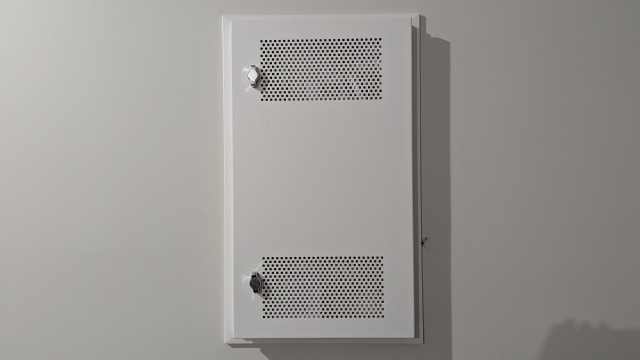
The Flawed Fixes Most People Try
If you're in this situation, you've likely already tried to solve it. Do any of these frustrating scenarios sound familiar?
-
The Mesh Network "Solution": You buy an expensive mesh Wi-Fi system or a repeater, placing the satellite units around your house. The problem is that these systems are designed to repeat a good signal. In this case, they are picking up a signal that is already severely weakened from being inside the box and trying to re-broadcast that weak, unreliable connection. It might be slightly better, but it's the definition of "garbage in, garbage out."
-
Moving the Router: You give up on the promise of a fully-wired home. You take your Wi-Fi router out of the cabinet and plug it into a single data point in a central room, like the study or living area. Your Wi-Fi improves, but you've just abandoned all the other data points your builder installed. The network ports in the bedrooms, the theatre room, and the home office are now useless.
-
Accepting Defeat: The most common outcome is simply living with it. You put up with a weak, unreliable, and infuriatingly slow Wi-Fi signal. You pay for a high-speed connection but rarely get to use it properly, accepting dropouts and dead zones as a normal part of life.
Customer story : fixing it the right way
You don't have to choose between good Wi-Fi and a fully functional, wired home. It is possible to have both, but it requires a professional touch to reconfigure your setup logically.
The solution is to get your Wi-Fi signal out of the metal box entirely. In this instance we started with a router that is only a router, no Wi-Fi or other features, just joining networks together.
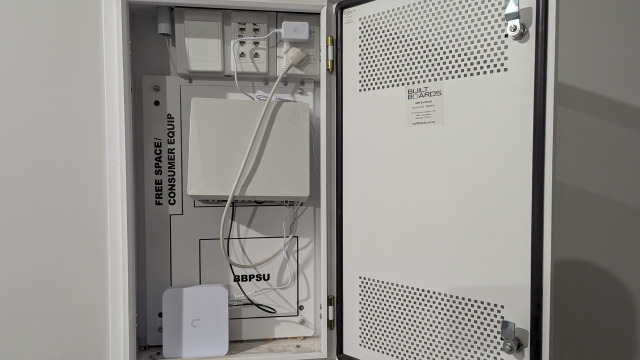
The advantage of this approach is avoiding the need to have any Wi-Fi signal in the cabinet whatsoever. To address the need for Wi-Fi we instead used the installed network cables to transmit Wi-Fi from within the house itself. Together with the customer we identified two ideal locations, a storage / security cabinet located near the front of the house and beneath the TV located near the rear of the house. For this we selected the Unifi In-Wall 6 Access points. These have the advantage that they are powered by the existing network cable, and they also provide a handy 4 port switch, so we gain more ports rather than losing any and we don't need to run power cables everywhere.
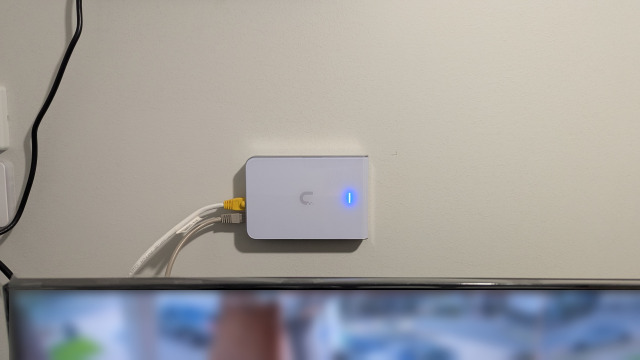 (above) In the security cabinet we simply popped the existing network point out of the wall and installed the In-Wall where it was.
(above) In the security cabinet we simply popped the existing network point out of the wall and installed the In-Wall where it was.
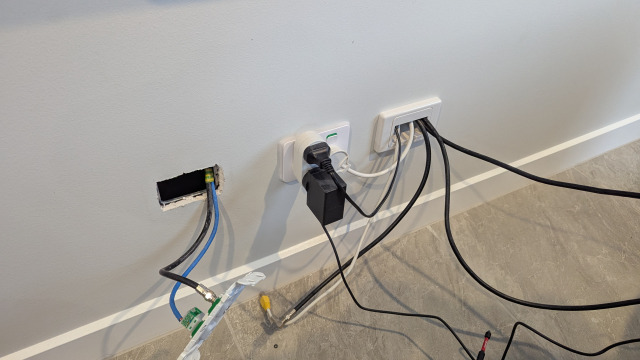 (above) The TV was a little more involved, we first needed to remove the existing Network + Antenna point and separate them out from each-other. Once finished we had a professional installation that suddenly turned a black-spot into the Internet fast lane.
(above) The TV was a little more involved, we first needed to remove the existing Network + Antenna point and separate them out from each-other. Once finished we had a professional installation that suddenly turned a black-spot into the Internet fast lane.

Back in the cabinet to power all of this was a Unifi USW-Ultra-60, selected for it's slim profile and magnetic mounting, making it one of the few units able to work in the very tight customer equipment space left in the cabinet.
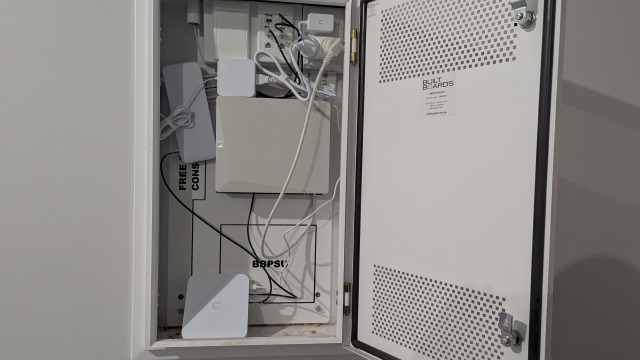
Of course once this was all done, we configured a Kid-Safe network and one for the parents bringing peace of mind together with a bump in speed to this family home.
If you’re tired of fighting with a network that works against you, stop the frustration and drop us a line - All Families Secure is here to help.